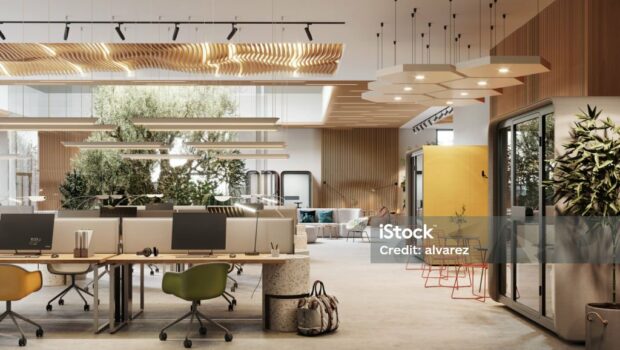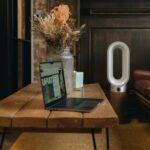How to Create a Collaborative Workspace with the Right Office Furniture
How to Create a Collaborative Workspace with the Right Office Furniture
In today’s dynamic work environment, collaboration is key to driving innovation and productivity. Designing a collaborative workspace requires more than just open floor plans; it involves strategically choosing office furniture that fosters teamwork, communication, and creativity. This article provides insights into creating an effective collaborative workspace with the right office furniture.
1. Understanding the Importance of Collaborative Spaces
Collaborative workspaces are designed to encourage interaction and teamwork. These areas are essential for brainstorming sessions, group projects, and spontaneous discussions. The goal is to create an environment where employees feel comfortable sharing ideas and working together efficiently.
2. Choosing the Right Furniture for Collaboration
To create an effective collaborative workspace, focus on furniture that supports both group interaction and individual comfort:
- Modular Seating: Modular furniture allows for flexible arrangements that can be easily reconfigured for different team sizes and activities. Look for pieces that can be rearranged to form various groupings or individual workstations.
- Collaborative Desks and Tables: Large, communal tables encourage group work and discussions. Adjustable-height tables can accommodate both sitting and standing positions, catering to different preferences and needs.
- Comfortable and Flexible Seating: Opt for comfortable, movable chairs or lounges that allow team members to shift positions and interact easily. Seating with wheels or that can be easily moved adds flexibility to the workspace.
3. Incorporating Technology and Connectivity
Modern collaborative workspaces require seamless integration of technology:
- Integrated Power and Data Ports: Desks and tables equipped with built-in power outlets and USB ports facilitate easy access to charging and connectivity, reducing cable clutter and ensuring that technology is always ready for use.
- Interactive Whiteboards and Displays: Interactive whiteboards or digital displays can enhance brainstorming sessions and presentations. These tools enable real-time note-taking and idea sharing.
- Video Conferencing Solutions: For teams that include remote members, incorporating high-quality video conferencing equipment is essential. Ensure that conference rooms and collaborative areas are equipped with reliable cameras, microphones, and speakers.
4. Creating Zones for Different Types of Collaboration
Different types of collaboration require different environments:
- Brainstorming Areas: Provide spaces with comfortable seating, writable surfaces (like whiteboards or chalkboards), and easy access to materials. These areas should be designed to facilitate creativity and free-flowing ideas.
- Meeting Rooms: Designate rooms with larger tables, ample seating, and appropriate technology for formal meetings and project discussions. Acoustic solutions to reduce noise and enhance focus are also beneficial.
- Casual Collaboration Spaces: Include informal seating arrangements, such as bean bags or soft lounges, where employees can have relaxed conversations and spontaneous meetings.
5. Enhancing Privacy and Acoustics
While promoting collaboration, it’s also important to address privacy and noise concerns:
- Privacy Partitions: Use modular partitions or privacy screens to create semi-private areas within open spaces. These can help manage noise and provide employees with a sense of personal space when needed.
- Acoustic Solutions: Incorporate sound-absorbing materials, such as acoustic panels or carpeting, to reduce background noise and create a more focused environment. Acoustic panels can be integrated into furniture or wall designs.
6. Fostering a Sense of Community
Furniture design can contribute to building a sense of community and engagement:
- Social Spaces: Create areas with comfortable seating, coffee tables, and refreshments to encourage casual interactions and socializing among team members.
- Customizable Spaces: Allow employees to personalize their workspace with adjustable furniture and décor options. This can enhance their connection to the workspace and improve overall satisfaction.
7. Prioritizing Ergonomics and Comfort
Comfort is crucial for effective collaboration. Ensure that all furniture supports good posture and reduces physical strain:
- Ergonomic Chairs: Choose chairs with adjustable features to accommodate various body types and sitting preferences. Proper lumbar support and seat height adjustments are key.
- Adjustable Desks: Provide desks that can be easily adjusted to different heights, allowing users to switch between sitting and standing.
8. Implementing Flexible Layouts
Flexibility in workspace layout allows for easy adaptation to changing needs:
- Movable Furniture: Furniture that can be easily moved or reconfigured supports dynamic work environments and changing team sizes.
- Modular Systems: Modular furniture systems can be adapted as the team’s needs evolve, providing ongoing versatility and functionality.
Conclusion
Creating a collaborative workspace with the right office furniture involves more than just selecting the latest trends. It requires thoughtful consideration of how furniture can support interaction, communication, and comfort. By focusing on modular and flexible designs, integrating technology, addressing privacy and acoustics, and fostering a sense of community, you can design a workspace that enhances collaboration and drives team success. The right office furniture can transform your work environment into a vibrant hub of creativity and productivity, ultimately benefiting both employees and the organization.

















I cannot tell you how excited I am to get your book. I'm trying to write a story involving Reunion…